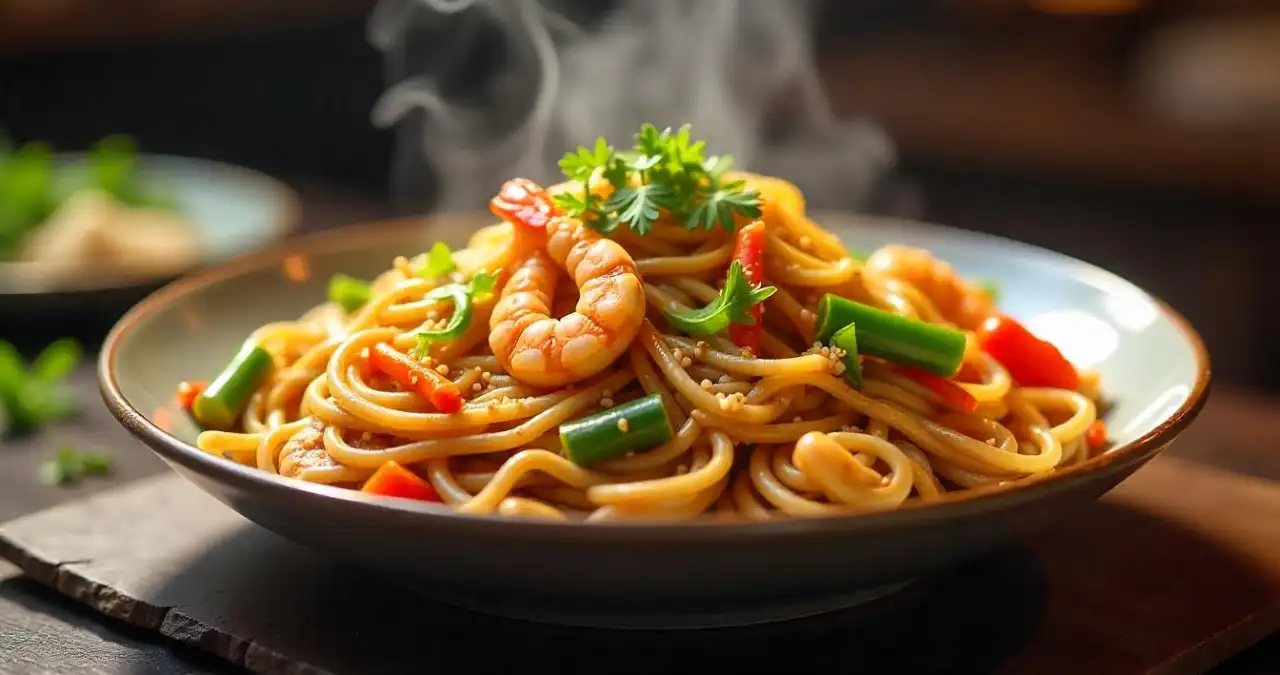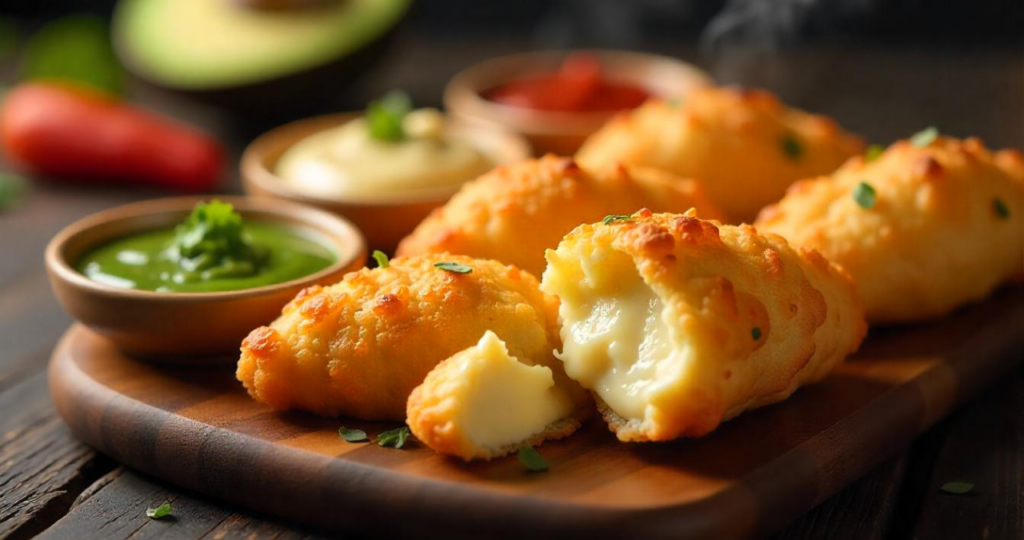House Special Lo Mein: All You Need To Know About This Chinese Delight

Have you ever tried a house special lo mein recipe (撈麵) in a chilled evening snack? It’s amazing for your daytime cravings. A special touch of shrimp, white kesme noodles, vegetables, chicken/pork/beef, and lots of sauce creates an instant glimmer of a special lo mein noodle platter.
Lo mein is a Chinese cuisine item that is also an alternative to chow mein, or sometimes it even beats it because it contains some extra flavourings.
Let’s make this Chinese special and enjoy it. We also got some additional facts on this recipe, let’s share it with you:
What’s A House Special Lo Mein?
Lo mein (stirred noodles) mainly originated in China and is popular as an American-Chinese cuisine. In Chinese culture, lo mein is specially made to celebrate birthdays or the new year. However, you can consume it whenever you want to.
House special lo mein is typically made with specific egg noodles known for their elastic texture. It combines different types of meat steaks, noodles, lots of vegetables, shrimp, and sauce, and it mainly beats our prevalent chow mein..
The reason for Lo Mein’s overall popularity is that it began as a straightforward, reasonably priced, and versatile Chinese cuisine.
Why is It known as a “House Special”?
Lo Mein specializes in “House Special” because of its ability that be customised and versatile which provides a variety of veggies and proteins. Unique ingredients like specific meat steaks and lots of veggies, bell peppers, onions, carrots, and bok choy are perfect for enchanted lo mein as one of the special dishes.
Oyster sauce, sesame oil, soy sauce, and chicken stock finish off your recipe in a captivating way.
Today I’m gonna make the chicken special lo mein. Let’s have the recipe:
How To Make House Special Lo Mein?
To make this Chinese cuisine, gather all the ingredients and follow the essential steps cautiously:
Ingredients
- 1/4 cup chicken stock
- 3 tablespoons oyster sauce
- 1 tablespoon soy sauce
- 1 teaspoon cornstarch
- 1 teaspoon sesame oil
- 3 tablespoons vegetable oil
- 4 teaspoons ginger (jardiniere)
- 2 teaspoons garlic (minced)
- 1/2 pound chicken breast or thigh (thin bite-sized slices)
- 2 to 3 cups fresh egg noodles
- 1/2 carrot (cut into jardiniere)
- 1/4 pound baby bok choy (cut into bias)
- 3 scallions (cut into 1/2-inch bias pieces)
Cooking Process:
Prepare the sauce:
The first step is to make the sauce perfectly. To do this, get a clean bowl and pour with chicken stock (it is neutral but it contains a savoriness to it to create an extra glaze), then add cornstarch and stir well.
After getting a thickened consistency, now add the soy sauce and oyster sauce to get a salty flavour and a brown colour. And, finally, add a little bit of sesame oil to get the ultimate smoky aroma to your final sauce.
Prepare the vegetables:
Wash all the vegetables and cut them as mentioned before. Ginger in jardiniere method, garlic in minced, carrot into jardiniere, baby bok choy and scallions in biased pieces. Make sure every veggie piece is a little thinner than their natural cut.
Prepare the Meats:
Cut the chicken into the diced way and wash the pieces.
Let’s Cook!
1. First, cook the store-bought noodles, and drain the water. Remember the noodles should be cooked perfectly, that it is not too hard and not too soft to boil. Rest the noodles with mix a of 1 tbsp of vegetable oil to prevent them from sticking to each other.
2. Take a frying pan, and add the required amount of natural vegetable oil. Take some time to heat the oil.
3. Now add the ginger and garlic pieces, stir well and after having a brownish colour, add the whole chicken (because the chicken needs to cook well). Be careful not to burn the chicken, alright?
4. Let’s add all the previously chopped vegetables. Mix and stir well.
5. After having a good fry, finally combine the noodles. Stir for around 2 minutes.
6. Add the sauce and stir well. Cooked, until it absorbs the overall sauce and becomes ideally soft.
7. The OMG lo mein recipe is completely done now. Serve hot.
Serving Tips
Lo Mein can be paired well with a variety of dishes and drinks, including starters, side dishes, and specific wines, including:
Starters are like egg rolls, crab rangoons, and soups. With drinks like Sauvignon Blanc or German Riesling.
A final touch of parsley, broccoli and even white sesame seeds are perfect for garnishing the House special lo mein recipe.
What Type of Protein Can I Use for This Recipe?
You are the main “CHEF”! – SO, It’s completely your individual choice to add protein type to your house special lo mein recipe.
As my recommendation, you can combine half the amount of beef and shrimp like 50/50. Also, combine pork, chicken and shrimp. If you’re craving seafood, you can also add chunks of tuna or salmon. Add whatever you like.
Vegetable Substitute
Vegetables can also be replaced. Swap any vegetables to your favourite one and enjoy. For example, you can add onions to get an extra flavour. Shredded napa cabbage, snow peas, spinach, and bean sprouts are the leading alternatives for this recipe.
Is It Okay To Make Lo Mein Without Adding Any Meat Steaks?
Why not? It can also be perfectly made if not using any type of meat like chicken, beef or pork. Specifically, focusing on vegetables and other protein sources, or even making it entirely vegetarian.
It is also a good choice to add tofu or tempeh, or mushrooms if you like. Rice noodles or udon noodles can also be good alternatives if you don’t want to use egg noodles anymore.
Nutrition Facts
As the nutrition value changes for the substitute of vegetables and protein types, if having the required ingredients, the nutritional information is much like this:
| Nutrient | Approximate Value (Per Serving) |
| Calories | 235 – 550 |
| Total Fat | 6.7g – 13g |
| Saturated Fat | 1.5g – 3g |
| Cholesterol | 37mg – 73mg |
| Sodium | 693mg – 1386mg |
| Total Carbohydrates | 26g – 52g |
| Dietary Fiber | 4.3g – 8.6g |
| Sugars | 7g – 14g |
| Protein | 18g – 36g |
Tips for Perfecting Your Lo Mein Every Time
Here are some valuable tips for making your lo mein outstanding every time:
1. Use the right noodles:
Lo mein noodles are typically made from wheat flour and are chewy in texture. Try to look for fresh or frozen lo mein egg noodles at your local market.
2. Prepare your ingredients:
Before starting to cook, make sure all of your ingredients are finely chopped, sliced, or diced. This will ensure that your lo mein is cooked quickly and evenly.
3. Use a wok or large skillet:
A wok or large skillet is essential for cooking Lo Mein. It allows you to stir-fry your ingredients quickly and evenly.
4. Stir-fry your ingredients:
Stir-fry your ingredients in a wok or large skillet, adding them in the order of their cooking time. This will ensure that your ingredients are cooked as fast as possible.
Lo Mein Health Benefits
House special lo mein contains multiple health benefits:
- High in fiber: Lo Mein noodles are made from wheat flour and are high in fiber, which can help lower cholesterol levels and promote digestive health.
- Low in calories: Lo Mein can be a low-calorie dish, depending on the ingredients used. Vegetables and protein sources can help keep the calorie count low.
- Good source of protein: This can be a good source of protein, depending on the ingredients used. Vegetables like broccoli and carrots are high in protein, while meat and seafood can add even more protein to the dish.
Lo Mein Cooking Tips for Beginners
If you are a beginner, don’t be disappointed to make this recipe for the first time, here’s some useful tips for you:
1. Start with a simple recipe:
Look for a simple Lo Mein recipe that uses ingredients you’re familiar with.
2. Use pre-cut ingredients:
Many Asian markets sell pre-cut ingredients, such as sliced vegetables and cooked meat, that can save you time and effort.
3. Practice your stir-frying technique:
Stir-frying is a key technique in Lo Mein’s cooking. Practice your stir-frying technique with simple ingredients before moving on to more complex recipes.
Common Mistakes to Avoid When Making Lo Mein
Most of the time, there are many missteps happen while cooking lo mein recipe, to avoid this, here’s a guide:
- Lo Mein noodles should be cooked until they’re slightly underdone. Overcooking can give them a mushy texture.
- Stir-frying is a key technique in Lo Mein’s cooking. Not stir-frying your ingredients quickly enough can result in uneven cooking.
- Lo Mein should be flavoured with a combination of soy sauce, oyster sauce, and sesame oil. Not seasoning your Lo Mein enough, can result in a tasteless and unappetizing dish.
Bottom Line!
Savoury noodle dishes like lo mein are quick, simple, and adaptable, making them ideal for a hectic weekday. Packed with vegetables and customisable with different proteins, House special lo mein is a filling and versatile choice for a tasty and nutritious dinner.
Make this for your lunch or dinner today and don’t forget to share your views about this recipe with us.
FAQs
Q1. What Are the Best Noodles for Lo Mein?
Ans: Egg noodles, pancit noodles, or even Japanese yaki soba noodles are the best noodles you can pick.
Q2. What is the Difference Between Lo Mein and Chow Mein?
Ans: Technically, chow mein is fried while lo mein is boiled. Texture-wise, chow mein is crispy and can be made without any sauce, while lo mein is soft and smooth with lots of sauce.
Q3. Is there any Alternative Sauces for Lo Mein?
Ans: Teriyaki sauce, coconut aminos, hoisin sauce, black bean sauce or even a homemade sweet and sour sauce can be used as an alternative condiment in a lo mein recipe.



